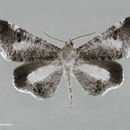fi
nimet breadcrumb-navigoinnissa


Prov. San José: Santiago Puriscal (1100 m) L- N 202700, 501500, Est. Santa Elena (1210 m) L_S_371750_507800, Res. Biol. Carara (500 m) L- N 192250_474760, Estación Carrillo (700 m), Prov. Alajuela: Reserva Ftal Arenal (600 m) L_N_269100_457900, P.N. Tenorio (300 m) L_N_291000_437000, P.N. Tenorio (700 - 800m) L_N_298212_427913, Alb. Heliconias (700 m) L_N_300250_423500, Caño Negro (20 m) L-N 319100_450200, Sector Colonia Palmareña (700 m) L_N_245900_475900, Dos Ríos (620 m) L_N_318100_381900, Prov. Cartago: Pque Nal Tapantí (1400 m) L_N_192600_560500, P.N. Barbilla (500 m) L_N_218279_596387, Grano de Oro (1120 m) L-N 200250_595900, Monumento Nacional Guayabo (1100 m)L N 217400_570000, Prov. Guanacaste: Est Pitilla (700 m) L_N_329950_380600, Cerro Azul (1050 m) L_N_214769_397000, R.F. Monte Alto (750 m) L_N_220750_383450, Bellavista (1050 m) L_N_214769_397000, Cerro Verde (650 m) L_N_240200_358650, Cerro Romo (880 m) L_N_220700_382545, Z.P. Nosara (780 m) L_N_220750_383450, Est. Los Almendros (300 m) L N 334800_369800, P. N. Santa Rosa (300 m), Prov. Heredia: Est. Magsasay (200 m) L- N 264600_531100, Pueblo Nuevo (90 m)L- N 271800_523750, Prov. Limón: Amubri (70 m) L-S 385500_578050, Cahuita (100 m) L_N_192000_659200, R.B. Hitoy Cerere (560 m) L_S_401200_569800, Cerro Tortuguero (0 a 120 m) L- N 285000_588000, Cerro Cocorí (150 m) L_N_567500_286000, Manzanillo (0 a 100 m) L-S 398100,610600, Prov. Puntarenas: Cerro de Oro (150 a 170 m) L_S_279650_518450, Bosque Esquinas (200 m) L S 301400_542200, Alto de las Moras (800 a 1000 m) L S 326800_533800, Est. Río Bonito (110 m) L_S_293900_547075, Río Bonito (0 m) L S 292100_547900, Est Sirena (0 a 100 m) L_S_270500_508300, Playa Cacao (130 m) L_S_286600_553100, Estación Altamira (1450 m) L_S_331700_572100, Est. El Bonito (500 m) L_S_546100_292700, R. Priv. Karen Mogensen (300 a 400 m) L_N_205872_421057, Rancho Quemado (200 m) L_S_292500_511000, Est. Esquinas (200 m) L S 301400_542200, Res. Biol. Monteverde (1520 m) L-N 253250, 449700, Monteverde (1000 a 1350 m) L_N_250850_449250, Est. Quebrada Bonita (50 m) L N 194500_469850, Finca Cafrosa (1200 m) L_S_318300_595300, P. N. Manuel Antonio (140 m) L_S 371500_449450, Las Cruces Biol. Sta. (1200 m) L_S 577500_304500.
Distribucion General: Desde Guatemala hasta Paraguay; Parque Nacional Isla Gorgona (Colombia), Cuzco en los Andes Peruanos, Venezuela, Isla de Trinidad, Surinam, Guyana Francesa y Belem (Brasil).
Macrosoma conifera is moth-like butterfly described by Warren in 1897. It belongs to the family Hedylidae.[1] Originally it belonged to the genus Phellinodes. Malcolm J. Scoble combined it with Macrosoma in 1986.[2]
The species is found extensively in Guatemala, north of Paraguay: Villarrica, Gorgona Island off the coast of Colombia, Cusco in the Peruvian Andes to eastern Brazil, Amazonas region of Venezuela, the island of Trinidad, Suriname, French Guiana, and Belém at the mouth of the Amazon in northeastern Brazil.[2][3]
M. conifera has wings of the greyish brown ground colour.
Forewing: The forewing has weak medial, semi-translucent area. The triangular white patch on costa is usually prominent, sometimes reduced. The apex is of dark grey-brown colour.
Hindwing: The termen is sometimes weakly sinuate, sometimes rounded; medially semi-translucent with darkish grey-brown colour.[3]
The length of the forewing is 21–26 millimetres (0.83–1.02 in).[3]
Following are the characteristics of the male genitalia:[3]
The female genitalia has the following features:[3]
The antenna is not bipectinate in both sexes.[3]
The absence of chestnut brown on the wings of M. conifera distinguishes the species from M. hedylaria and M. cascaria. M. conifera is also similar in wing pattern to M. semiermis and its relatives, but in M. conifera the antenna is filiform not bipectinate.
Macrosoma conifera is moth-like butterfly described by Warren in 1897. It belongs to the family Hedylidae. Originally it belonged to the genus Phellinodes. Malcolm J. Scoble combined it with Macrosoma in 1986.